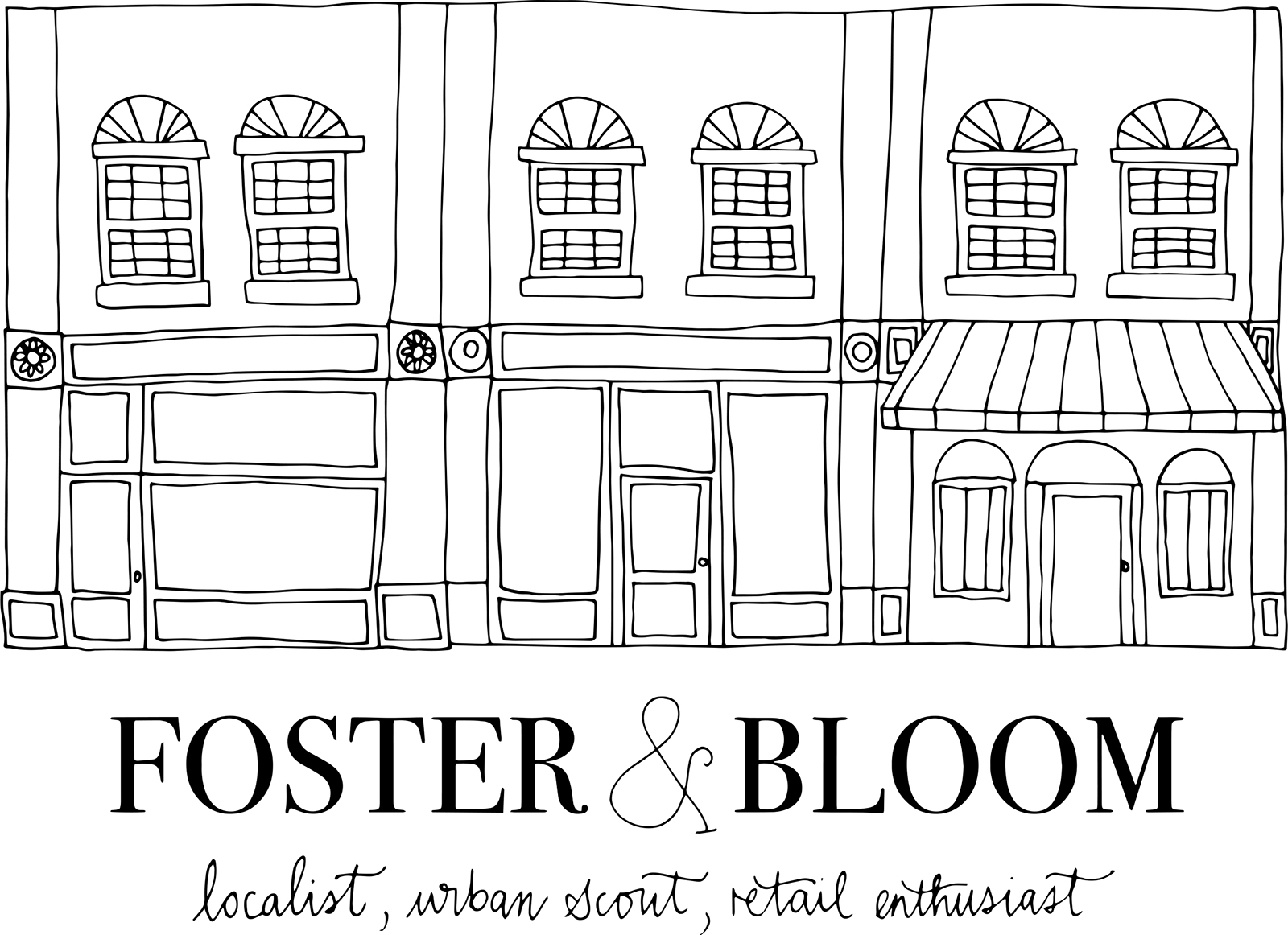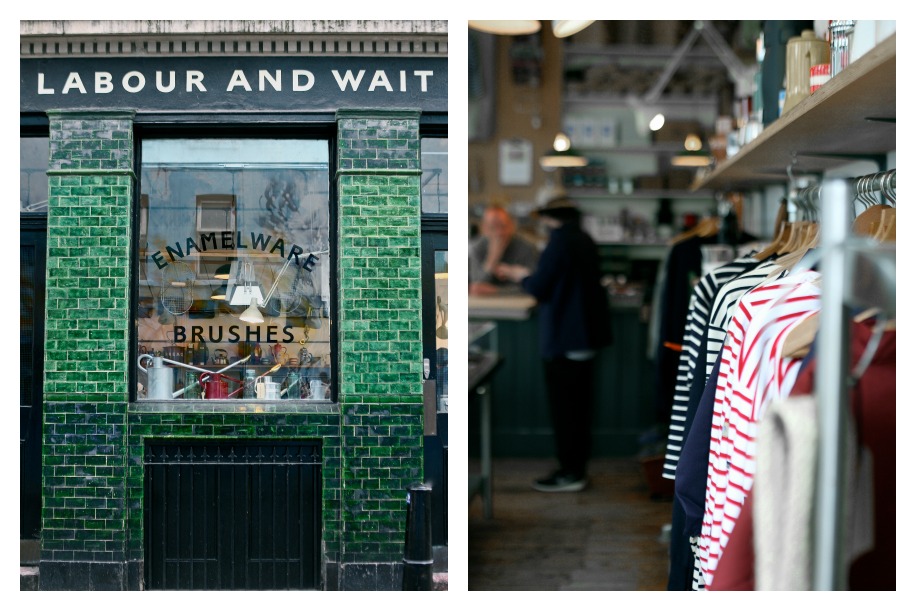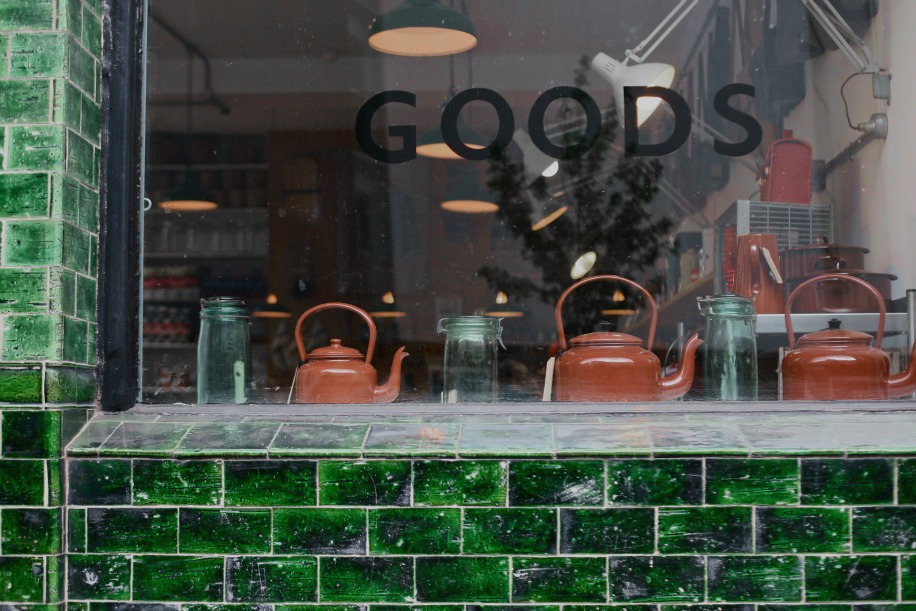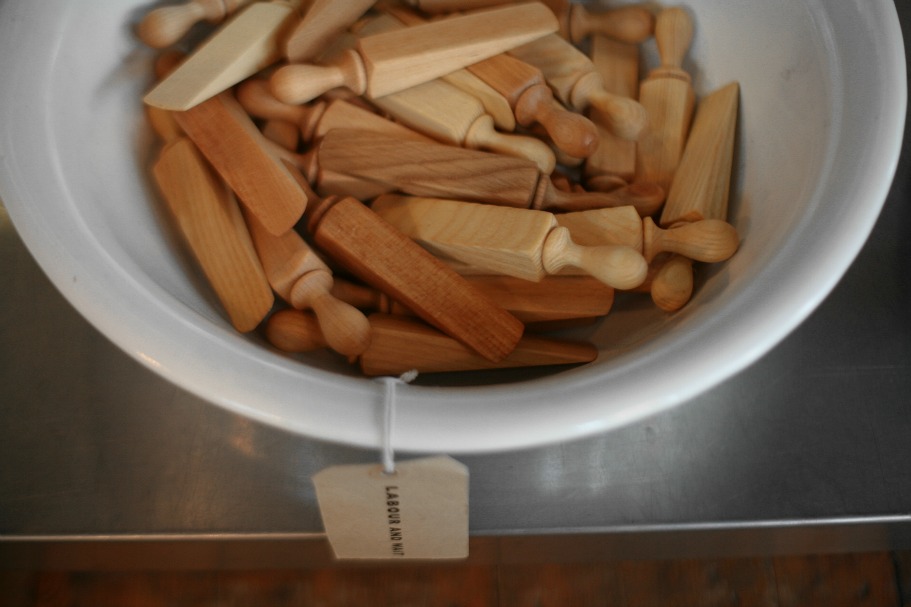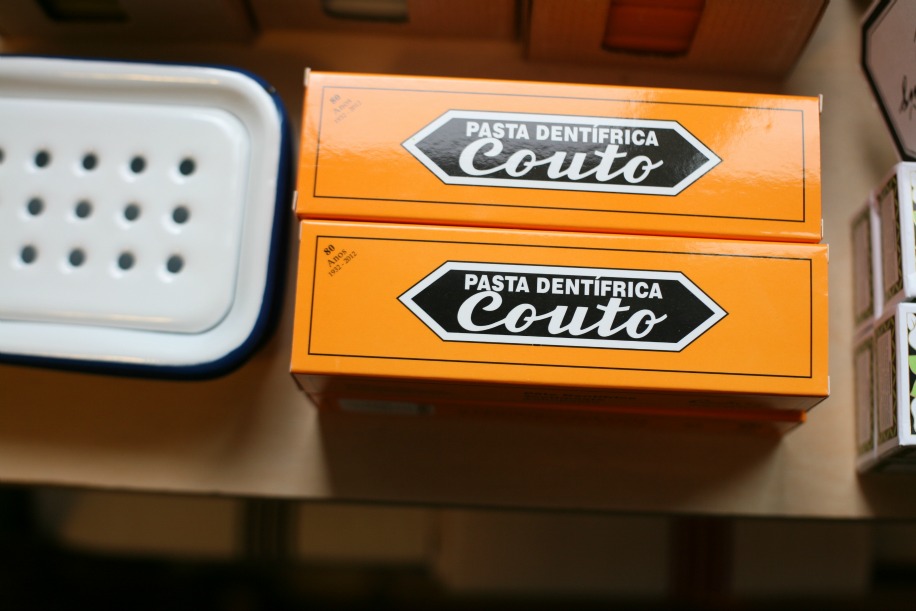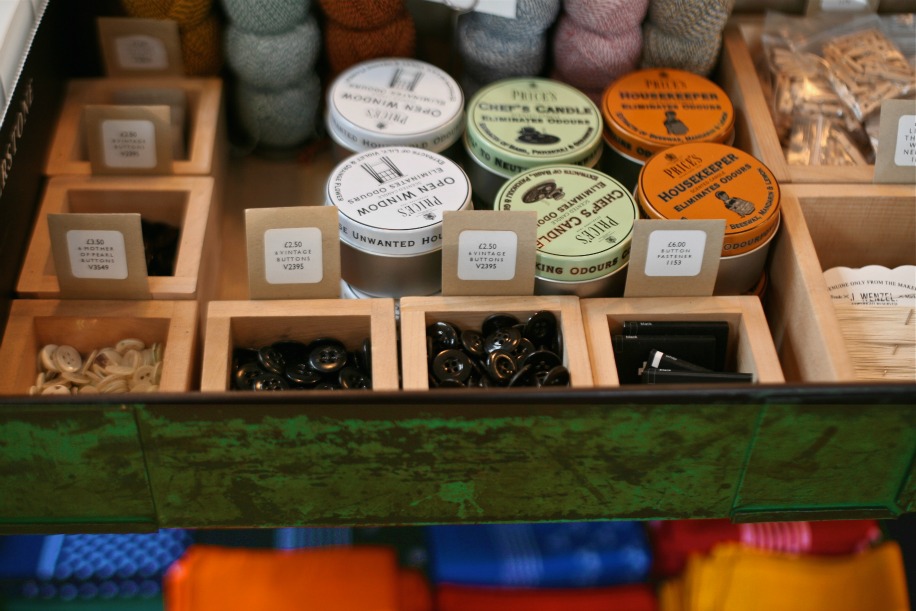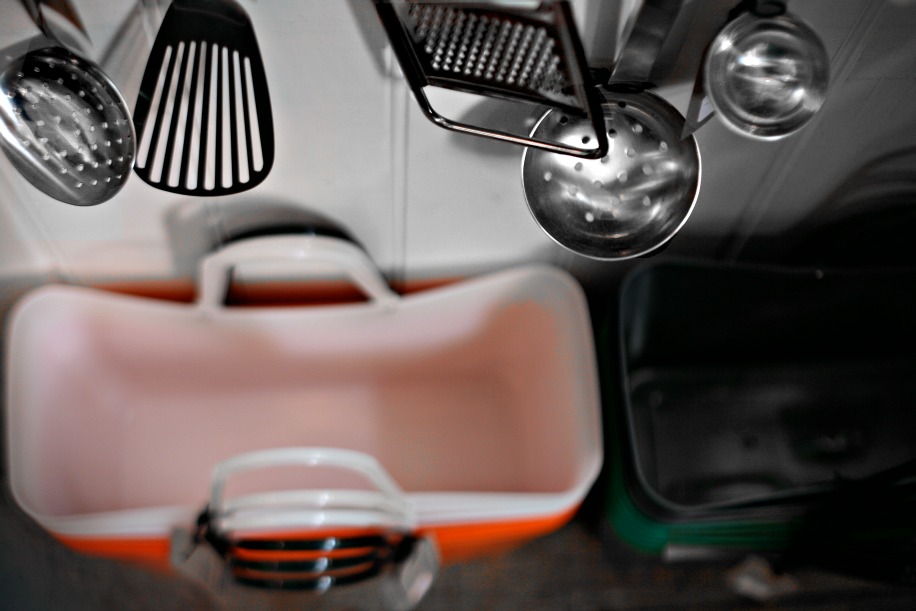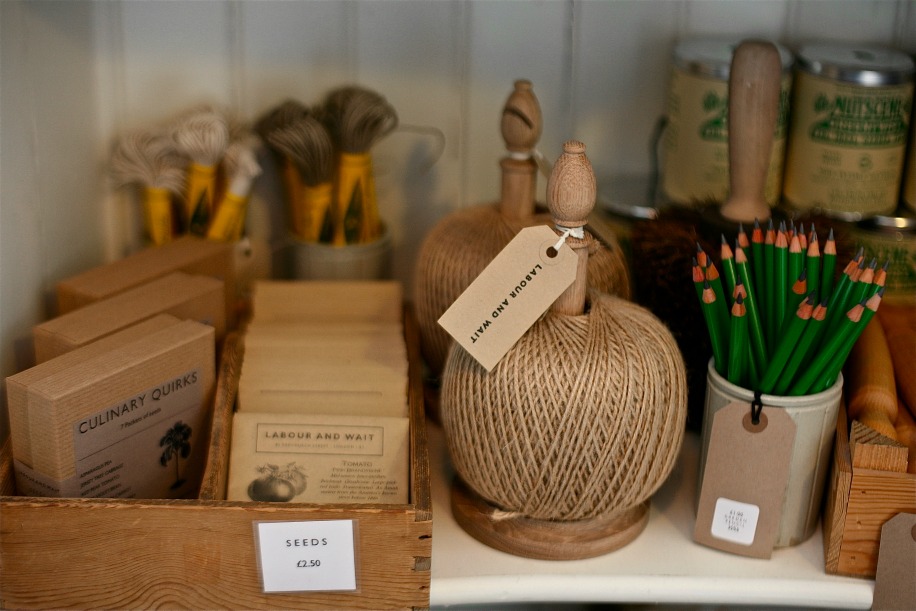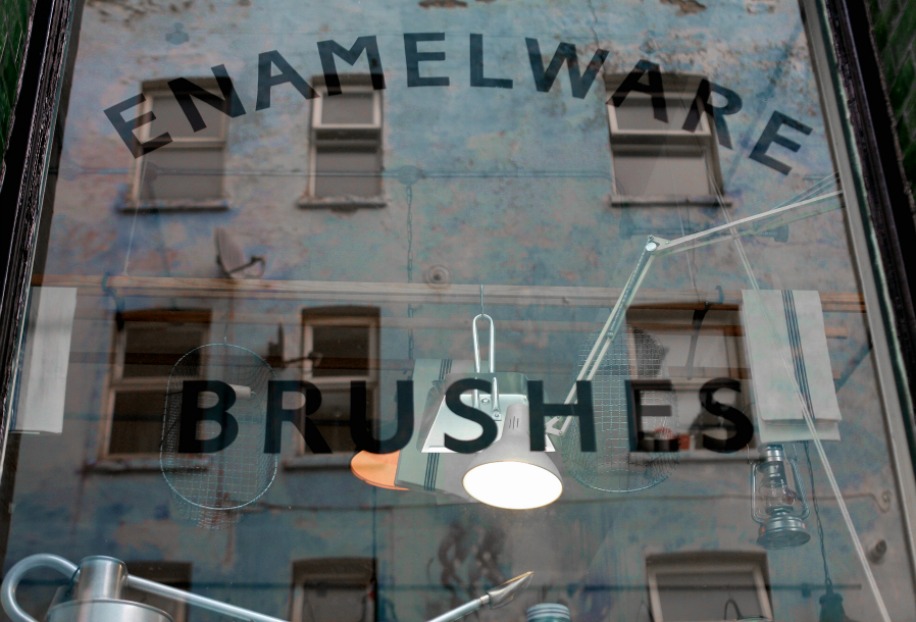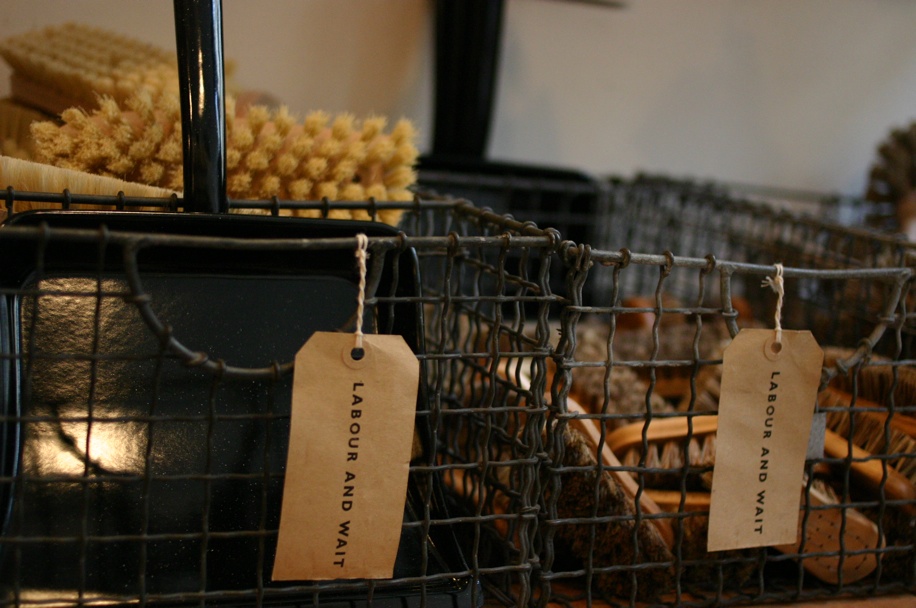Labour and Wait, 85 Redchurch St, London E2 7DJ
Rachel Wythe-Moran and Simon Watkins’ shop was born of discontent. Bored with their respective jobs as menswear designers and disillusioned with the fickle world of fashion, they were both looking for an escape. Designing for the high street wasn’t cutting it anymore. “It had all become very samey and boring. The design aspect involved reinventing the wheel every six months” says Rachel. Simon wondered why design had to be trend-oriented: “The things I like to wear, I’ve always liked. Why can’t this apply to all the products in my life?”
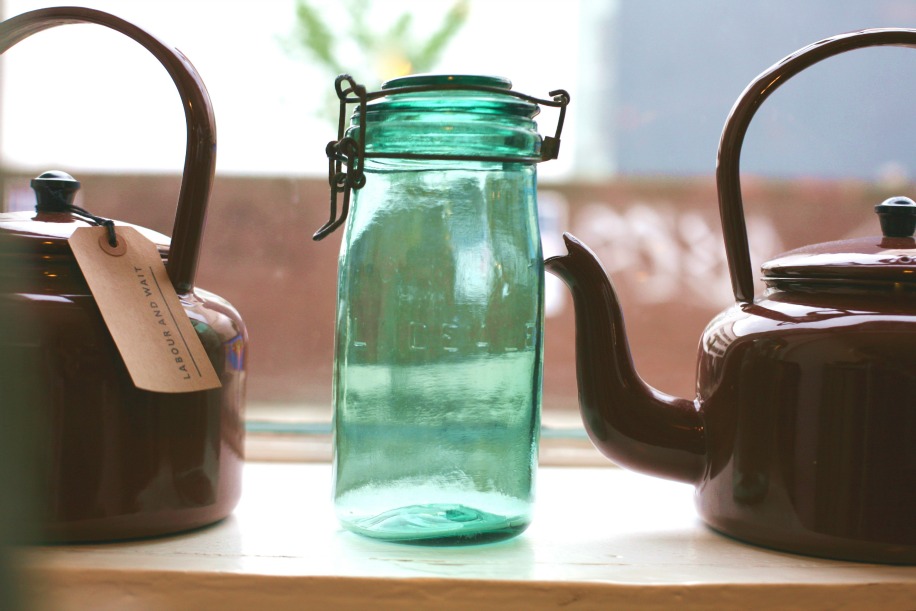 Rachel and Simon are a striking pair. They are stylish, but unpretentious; cool without being flashy; empassioned but restrained; with a general air of neat and tidiness and a bespectacled streak of studiousness about them. They are, in an offbeat way, chic. These old friends have created a shop that reflects their own aesthetic but has also created a life and a philosophy of its own.
Rachel and Simon are a striking pair. They are stylish, but unpretentious; cool without being flashy; empassioned but restrained; with a general air of neat and tidiness and a bespectacled streak of studiousness about them. They are, in an offbeat way, chic. These old friends have created a shop that reflects their own aesthetic but has also created a life and a philosophy of its own.
Mutual friends urged them to meet when they saw they had a lot in common, and in the midst of one of their first conversations, Simon mentioned he was looking for a good dustpan. This proved to be their founding inspiration. “We started listing everything we liked, things we just found difficult to find, like a metal dustpan or a wooden brush…I wanted a traditional one that is painted, I didn’t want a rubbishy plastic one that looks like something else.”
A list of longed for objects grew and grew: a proper wooden toilet brush, good quality pencils, old-fashioned wooden washing pegs, a can opener with red handles. Their list evolved to include not just things for the garden or kitchen, but books and clothes too. A criteria emerged. Fed up with the fads and artifice of design – “Does anyone really need or even use a giant Alessi citrus squeezer?” – Rachel and Simon decided the more prosaic virtues of usefulness, timelessness and functionality needed celebrating.
They set out to create an environment full of ‘classic’ objects that do not date: simple things with a purpose. A sort of photo-collage was put together – in lieu of a ‘proper business plan’ – for their first and only meeting with a bank. Their list was brought to life with images and tear-sheets from magazines featuring the sorts of things they sought to sell. The bank, somehow charmed by this scrapbook full of buckets, blankets, brooms and twine, said yes. The loan boosted Rachel and Simon’s own savings, and the hunt began – first, for products.
What Simon and Rachel revere is design in its purest sense; high-quality objects that have evolved through their use. Although they all have a functional purpose, the products in the shop aren’t boring. Simon explains: “We like doing slightly offbeat things – you can hear us saying ‘odd’ a lot. We like to try to find things that aren’t the obvious. We say: ‘I like that because it’s a really odd colour, or the colour you’d never do.’” Such explains the provenance of moose-shaped firelighters from Sweden. Over the years, the shop has had imitators, but none has achieved quite the same effect, or the same success. Rachel and Simon note that “so many people think they’ve locked into exactly what our shop’s like and this is what you’d have…and then [looking at the product] we’re like ‘Hmmm. No.’”

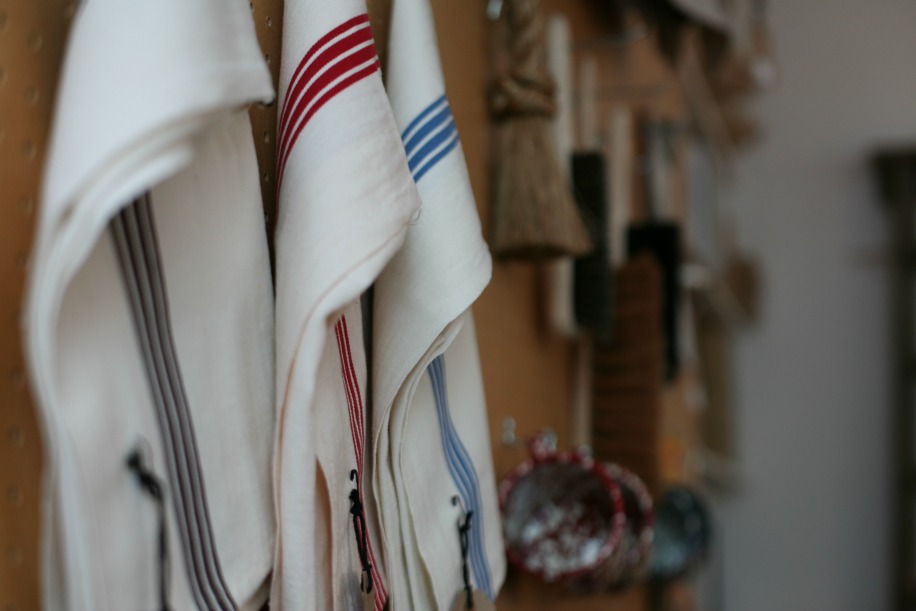
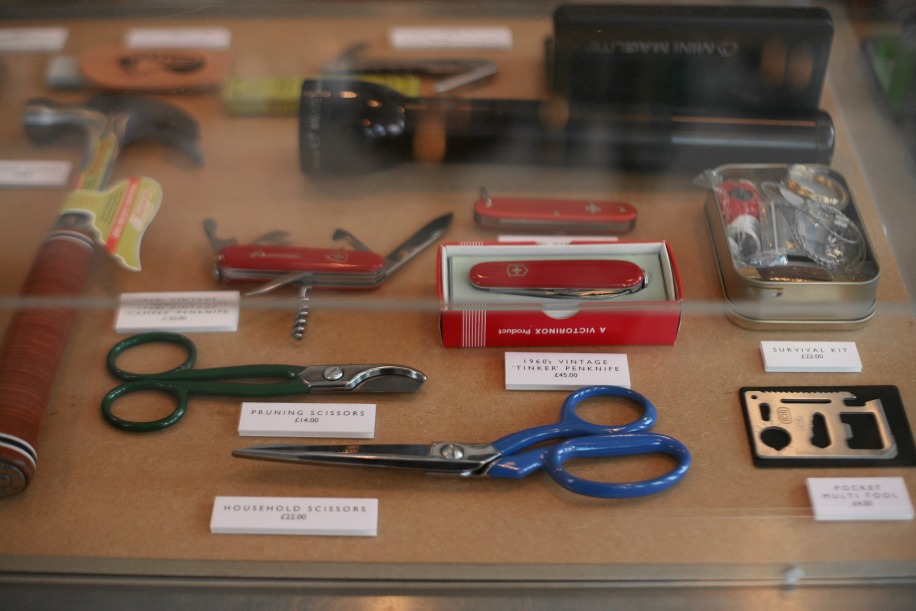 Their search for products was – and continues to be – a struggle. Friends’ houses, junk shops, foreign cities and trade fairs are regularly scoured. Rachel and Simon’s particular brand of everyday objects is surprisingly difficult to source. As Rachel explains: “Quite often the things right at the back of the trade fair stand are the things we hone in on. Something the supplier has been making for years that they’re really bored of and don’t like at all.” The kinds of things that make it to the LABOUR AND WAIT shop floor are often produced by manufacturers who don’t have an exhibition stand or a website, or sold through small families who don’t make a big noise. But they seem to take a peculiar sort of pride in just how difficult it is to source things that are ‘right’ for their shop.
Their search for products was – and continues to be – a struggle. Friends’ houses, junk shops, foreign cities and trade fairs are regularly scoured. Rachel and Simon’s particular brand of everyday objects is surprisingly difficult to source. As Rachel explains: “Quite often the things right at the back of the trade fair stand are the things we hone in on. Something the supplier has been making for years that they’re really bored of and don’t like at all.” The kinds of things that make it to the LABOUR AND WAIT shop floor are often produced by manufacturers who don’t have an exhibition stand or a website, or sold through small families who don’t make a big noise. But they seem to take a peculiar sort of pride in just how difficult it is to source things that are ‘right’ for their shop.

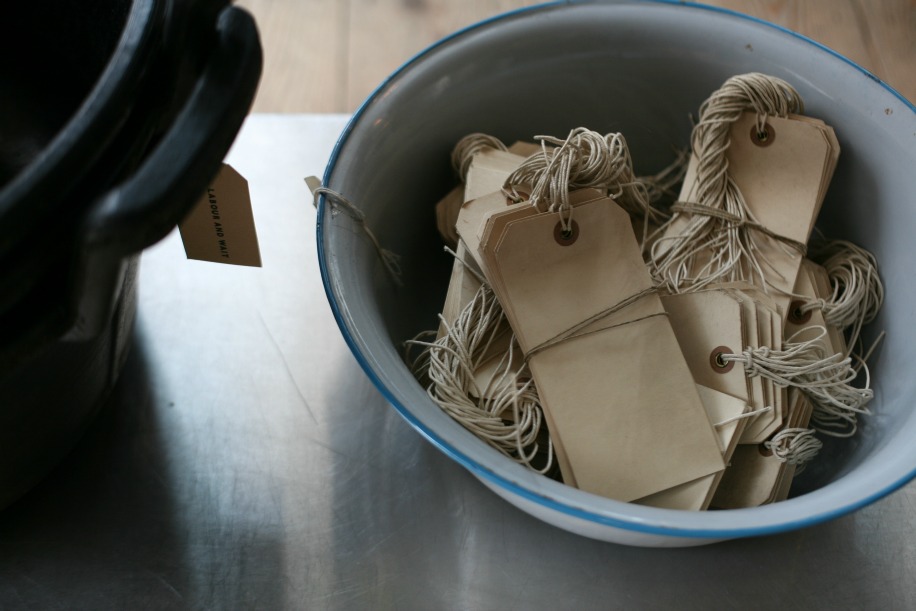 In fact, it seems that the responsibility of choosing what’s right for LABOUR AND WAIT has shifted over the years; from the shopkeepers onto the shop itself. “We started originally with the product. The shop was built on its products. But we’ve found they somehow reinforce each other.” says Simon. “To begin with, you tell the business what it wants, you choose products and put them in the shop, but then what happens is the shop tells us what it needs. It almost won’t allow us to put the wrong thing in there.” Rachel adds that the shop’s idiosyncratic nature can cause last minute issues. “A few things we’ve nearly ordered and then thought, ‘you know what…? We’re not sure about that. It’s not right.’ And we have to step back and say no.”
In fact, it seems that the responsibility of choosing what’s right for LABOUR AND WAIT has shifted over the years; from the shopkeepers onto the shop itself. “We started originally with the product. The shop was built on its products. But we’ve found they somehow reinforce each other.” says Simon. “To begin with, you tell the business what it wants, you choose products and put them in the shop, but then what happens is the shop tells us what it needs. It almost won’t allow us to put the wrong thing in there.” Rachel adds that the shop’s idiosyncratic nature can cause last minute issues. “A few things we’ve nearly ordered and then thought, ‘you know what…? We’re not sure about that. It’s not right.’ And we have to step back and say no.”
Rachel and Simon admit that the shop reflects their own tastes and personalities, to an extent, but insist that it is also very much “its own thing.” The enigmatic character of the shop is part of its appeal, but its owners are struck dumb when asked to describe the shop’s personality. When I suggest that the shop feels intrinsically English to me –it is tidy and ordered but not overly glossy or smart; it is slightly eccentric and a bit left of centre – Rachel and Simon say it’s an unplanned side effect: “We are both quite traditional English types, we like British things, the British aesthetic, but that’s not really a conscious thing. The products are from all over Europe and America.”
Eight years ago, the shop’s first location on Cheshire Street was certainly cutting edge and trendy, but largely unkown. A few wholesalers and used furniture traders sat huddled alongside a bustling Brick Lane, but the street’s proximity to Columbia Road’s Sunday flower market meant a steady flow of pedestrian traffic at weekends. In those early days, customers were curious and intrepid – arriving like “rabbits in the headlights,” unfamiliar with the edgy East end, clutching a page they’d torn out of a magazine, thinking “’Wow, I’m really running the gauntlet in this scary area,’” says Rachel.
Originally, Rachel and Simon hoped to create a space for things that could be an inspiration for designers, the real ‘classics’. It was not long before Rei Kawakubo, designer and founder of Comme des Garcons – the brand behind Dover St Market — wandered in. Then LABOUR AND WAIT was offered a concession at the DSM fashion emporium, to be run autonomously by Rachel and Simon. Alongside the inspired creations of avant-guarde designers sits a small wood and glass countertop and shelf, filled with things like leather diaries and coloured pencils, balls of jute twine, vintage linen and woollen blankets. They look like odd artefacts next to suits by Dior Homme and dresses by Boudicca, but actually the concession fits right in to the Dover St. environment, allows DSM to ‘keep it real’ and also allows Rachel and Simon to do things they cannot in the shop – haberdashery kits, for example, providing the nuts and bolts for creative types to produce DIY style.
When Simon and Rachel first told their friends about their idea, they were less than supportive: “’You’re going to sell buckets?’ ‘Yeah, really nice buckets.’ They thought we’d lost it.” But Simon and Rachel persevered with their shared vision of what and how good the shop could be. Their partnership was the key to their success: “you’ve got to find the person who really agrees with you. We very rarely disagree on products…” starts Simon, “…and we do have very similar view and eye.” Rachel adds, finishing his sentence.
A photo I once saw of Rachel and Simon standing outside their shop front has always reminded me of the painting ‘American Gothic’ from the 1930s– a farmer and his daughter standing outside a farmhouse, bearing a pitchfork and solemn expressions. The painting tells a story about hard work and a simple life: a philosophy harmonious with the LABOUR AND WAIT concept. The shop’s name was taken from a Longfellow poem entitled ‘A Psalm of Life.’ Its conclusion is a mantra to taking action:
Let us, then, be up and doing,
With a heart for any fate ;
Still achieving, still pursuing,
Learn to labor and to wait.
…a message this pair have taken to heart.
